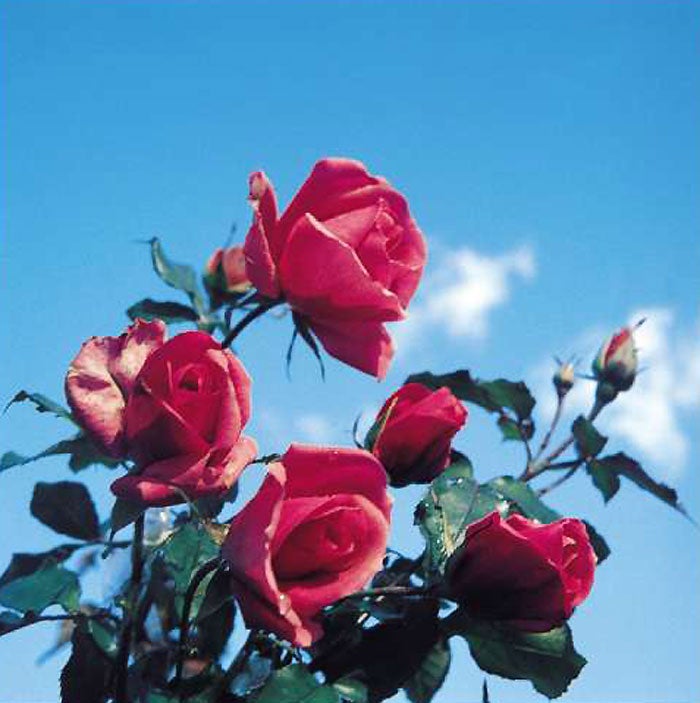Urban Gardener: Memory lane

Your support helps us to tell the story
From reproductive rights to climate change to Big Tech, The Independent is on the ground when the story is developing. Whether it's investigating the financials of Elon Musk's pro-Trump PAC or producing our latest documentary, 'The A Word', which shines a light on the American women fighting for reproductive rights, we know how important it is to parse out the facts from the messaging.
At such a critical moment in US history, we need reporters on the ground. Your donation allows us to keep sending journalists to speak to both sides of the story.
The Independent is trusted by Americans across the entire political spectrum. And unlike many other quality news outlets, we choose not to lock Americans out of our reporting and analysis with paywalls. We believe quality journalism should be available to everyone, paid for by those who can afford it.
Your support makes all the difference.Plants on their own don't really do fashion. Few would be inclined to rip out a plant the minute it's reached maturity just because it wasn't seen at Chelsea that year. The way plants are used together, however, is different. This can fit a trend but can take several years to understand and appreciate before being labelled as a movement. Current trends, such as the new perennial movement spearheaded by Piet Oudolf and Noel Kingsbury, have plenty of steam left for the larger garden where experimenting with drifts of perennials and grasses, seems boundless. In smaller, urban gardens, the trend for exotic planting has increased in line with our concern for climate change.
Reviewing my plant plan for The Bupa Garden at this year's Chelsea Flower Show it suddenly dawned on me that, despite my preference for contemporary design, the plants I've chosen have a definite "mixed-border" feel about them. It's a style that uses a wide range of trees, shrubs, perennials, annuals, biennials and bulbs to get the most from successional flowering and has been the benchmark of the English garden since Christopher Lloyd wrote his book of the same title in 1957. The trend endured for a good 30 years before the Dutch and German new perennial influence began to eclipse it and while it hasn't exactly died out completely, the term mixed-border does seem to carry a retro flavour these days.
Chelsea stalwarts have an insatiable appetite for nostalgia and replication but I prefer to avoid retrospective angles for show gardens mostly because it seems a wasted opportunity not to push the boundaries a little. This garden, however, has specific needs, not only to include a wide range of plants to satisfy the sensory angle, but that it should help stir the memory of care home residents, in particular those with dementia, who will use the garden when it's re-located after the show. To help with my plant selection, Bupa conducted a survey of favourite plants at a number of care homes. Lavender, lupins rank highly but top of almost every list was, of course, the rose.
The rose may have no rival but I seem to remember a band of avant-gardeners in the 1990s (including yours truly), who saw them as old-fashioned and whooped with joy when Christopher Lloyd replaced his Lutyens-designed rose garden at Great Dixter with exotic plants in 1996. I've tempered my view since then, but I must admit to some anxiety as I've never used roses in a show garden before. Aside from youthful disrespect for tradition, my early ambivalence may have been fuelled by a childhood trauma when, having fallen into a rose bed, the more I struggled the more the thorns dug deep. Later, years spent weeding my ageing aunt's equally aging rose accentuated my prejudice. I am pleased to report that I have since been converted and while we won't have some of my favourite species roses such as R. pimpinellifolia or R. Scharlachglut, I'm hoping to include David Austin's white scented cultivar 'Winchester Cathedral' and the old rambler 'Felicité et Perpétue', all placed safely out of harm's way.
A happy bonus to all this is that I've had the pleasure of meeting Arnold Peters. The name may not ring a bell immediately but many of you know him very well as he plays Jack Woolley in Radio 4's The Archers (he also appeared in one of my favourite films, A Man for All Seasons). Fans of the programme will know that Jack has Alzheimer's disease so Arnold spent a morning among the roses recently at Covent Garden Market to help Bupa promote the garden.
So, roses and mixed borders are in this year, the familiar, I'll concede on this occasion, having its place. Obviously there will be a contemporary twist here and there to keep things fresh but the Bupa garden needs a touch of nostalgia if it's going to be appreciated by those who will eventually use it. My aunt would be so proud.
Join our commenting forum
Join thought-provoking conversations, follow other Independent readers and see their replies
Comments